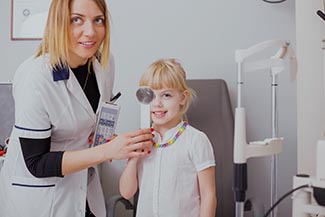Over 15 million people in the US suffer from a vision problem requiring vision therapy.
Since certain vision problems cannot be entirely treated with contact lenses or glasses alone, vision therapy is often recommended.
This is why a customized program known as a vision therapy program is a viable option that is highly suggested by trained optometrists today.
Understanding vision therapy
Vision therapy is a customized program of in-office and at-home treatments aimed to correct perceptual-cognitive or visual-motor impairments in patients with varied vision issues.
A full examination and evaluation by a certified developmental optometrist is the first step in determining whether or not a person requires vision treatment.
Once the examination has been completed, a fully personalized vision therapy program will be prescribed.
Individualized vision therapy sessions are supervised by an experienced optometrist and are tailored to an individual’s specific vision problem.
SEE RELATED: Guide to Vision Therapy
Contact an eye doctor near you to find out if vision therapy can treat your or your child’s vision problems.
In-office vision therapy
In-office vision therapy sessions are vital to the overall success.
These run for 45 minutes to about an hour and are held at the doctor’s office under the strict supervision of a qualified developmental optometrist.
These in-office sessions are usually held once or twice a week or fortnightly, depending on the severity of the visual problem.
The total duration of a vision therapy program, on the other hand, is determined by the unique nature of each case and can range from a few weeks, months to more than a year.
What does in-office vision therapy involve?
Generally in-office sessions will usually be performed by a qualified and experienced vision therapist.
The following is an example of a typical vision treatment session:
- Assessment of the performance of at-home activities
- Usage of specific office-based equipment
- Vision enhancing/improving techniques and skills
- Usage of optical filters, eye patches and 3D glasses
- Instruction for the next series of at-home tasks
Several advanced optical instruments can be used in vision therapy sessions, including:
- Prism lenses
- Highly advanced computer software programs
- Visual-motor-sensory integration training
What happens after the in-office session?
Following the in-office vision training the vision therapist will have a clearer indication of the progress and how the visual skills are improving.
The vision therapist will then prescribe additional vision-improvement procedures and exercises that must be practiced at home, specifically between office visits, to strengthen the visual abilities acquired during vision therapy sessions.
Benefits of vision therapy
Vision therapy sessions are specifically designed to improve the brain’s ability to handle specific vision problems.
This is accomplished through visual exercises and technique program that provides the following benefits:
- Augmenting focusing ability
- Improving all-round eye movement
- Maintaining precise eye alignment
- Raising visual processing ability
- Facilitating overall visual efficiency, comfort and ease
While vision therapy can help to correct many vision problems, it is critical to consult with an optometrist as soon as you notice any type of visual problem.
LEARN MORE: Vision Therapy
Schedule an appointment with a vision therapy eye doctor near you to learn more about how vision therapy can help.
To improve your child’s lazy eye or school performance, vision therapy with in-office sessions, could provide the best outcomes.









